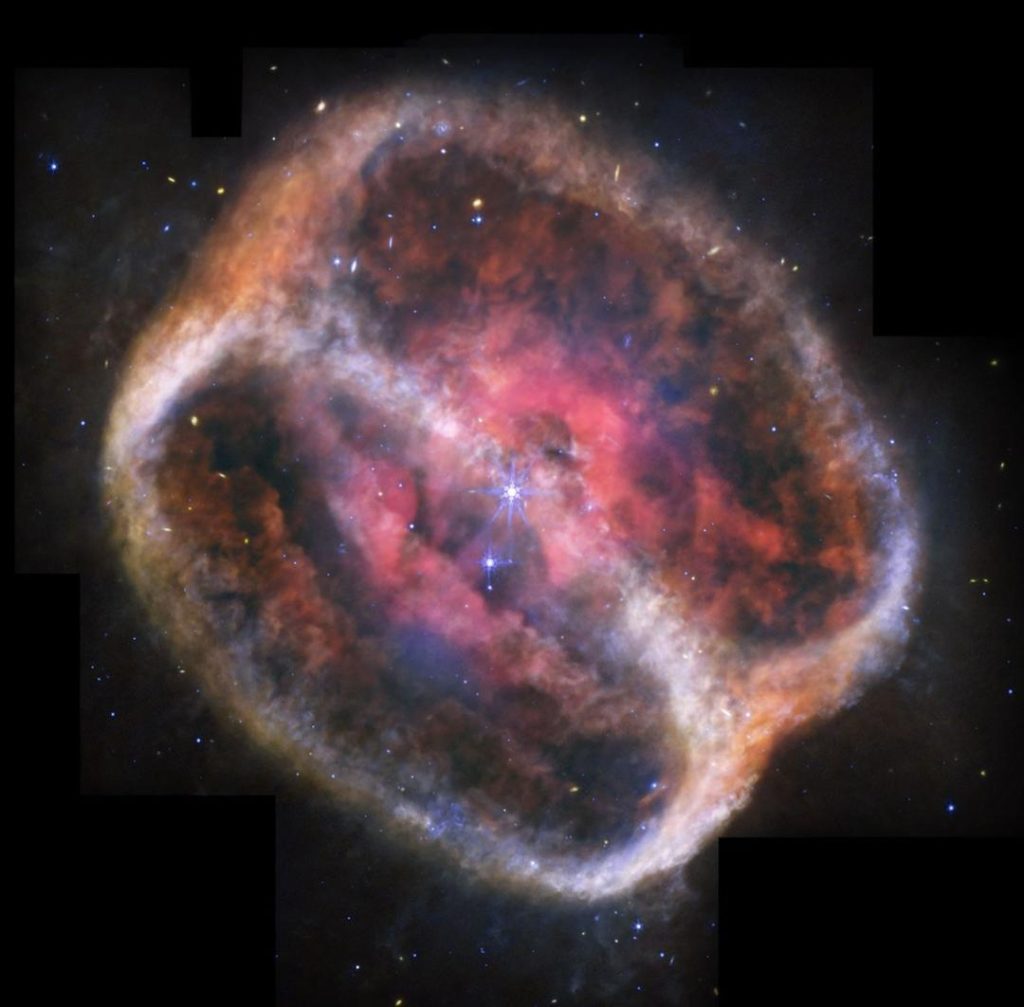
Clearest Picture of Dying Stars 1,000 Light Years Away Revealed
In a groundbreaking achievement, NASA has shared the clearest picture of dying stars to date, which exists over 1,000 light-years away. The stunning images of planetary nebula NGC 1514 were captured by the James Webb Space Telescope, offering an unprecedented glimpse into the mesmerizing display of celestial bodies in the final stages of their life cycle.
Located in the constellation of Eridanus, planetary nebula NGC 1514 is a breathtaking spectacle that has been captivating astronomers and space enthusiasts alike for centuries. The nebula is the result of a dying star shedding its layers of dust and gas as it nears the end of its life cycle. At the heart of this cosmic show lies a pair of stars, one of which is in the process of expelling its outer layers into space.
The James Webb Space Telescope, launched in December 2021, has been designed to capture the most detailed images of the universe. Equipped with its advanced instruments and cutting-edge technology, the telescope has been able to pierce through the veil of interstellar dust and gas, revealing the intricate structures and processes occurring within the nebula.
The new images of NGC 1514 provide a unique insight into the final stages of a star’s life. As the star begins to exhaust its fuel, it expands to become a red giant, engulfing nearby planets and other celestial bodies. Eventually, the star sheds its outer layers, creating a planetary nebula that can be seen from millions of light-years away.
The James Webb Space Telescope has been able to capture the intricate details of this process, revealing the vibrant colors and structures of the nebula. The images show a vibrant greenish hue, which is a result of the interaction between the star’s light and the surrounding gas and dust. The colors are a combination of ionized oxygen, nitrogen, and sulfur, which are excited by the intense radiation emitted by the star.
The new images also provide valuable insights into the physical processes occurring within the nebula. Astronomers can see the star’s light illuminating the surrounding gas and dust, creating a range of fascinating structures and patterns. The images show wispy tendrils of gas and dust, which are being sculpted by the star’s radiation and strong winds.
The James Webb Space Telescope has been designed to study the formation of the first stars and galaxies in the universe. By capturing images of dying stars, the telescope is able to provide new insights into the life cycles of stars and the processes that shape the universe.
The new images of NGC 1514 are a testament to the incredible capabilities of the James Webb Space Telescope. As the telescope continues to explore the universe, it is expected to reveal even more breathtaking sights and provide new insights into the mysteries of the cosmos.






